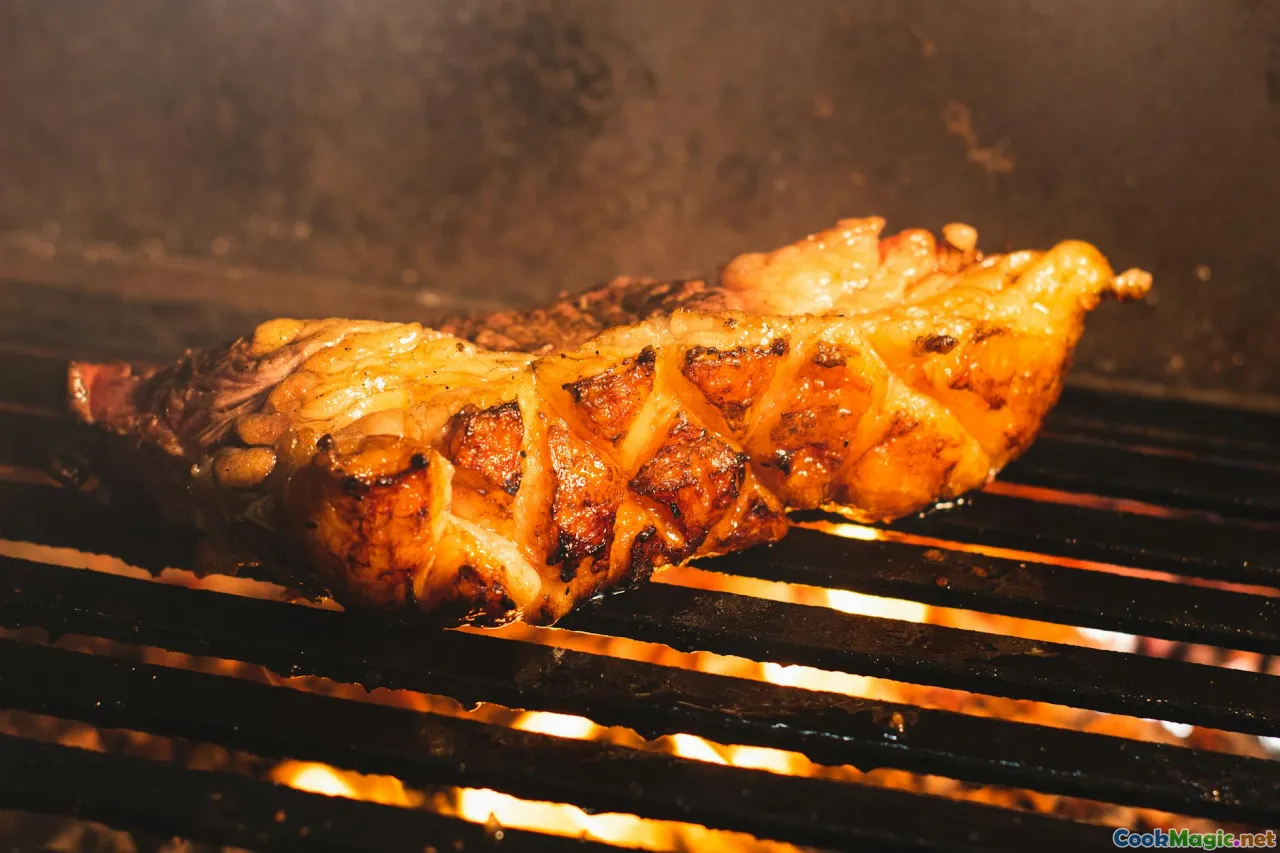Modern Twists on Traditional Brazilian Steaks
8 min read Discover how contemporary chefs are reinventing Brazilian steaks with innovative techniques and flavors, blending tradition with modern flair. May 12, 2025 03:00
Modern Twists on Traditional Brazilian Steaks
Introduction: A Journey from Tradition to Innovation
Imagine walking into a bustling churrascaria in Rio de Janeiro, the air thick with the smoky aroma of perfectly grilled meats, the sound of lively conversation, and the vibrant clatter of skewers being carved. Now, picture that same scene transformed—where age-old techniques meet daring creativity, and classic flavors are reimagined with a modern twist. This evolution captures the essence of contemporary Brazilian cuisine: honoring tradition while embracing innovation.
Brazilian steaks, or picanha, maminha, and other cuts, have long been celebrated for their rich flavors and communal experience. But today, chefs and food enthusiasts are pushing boundaries, integrating global influences, alternative cooking methods, and unexpected ingredients to elevate these timeless dishes. This article explores how modern culinary artistry is reshaping the beloved Brazilian steak tradition, blending history, culture, and inventive techniques to create a new chapter in Brazilian gastronomy.
The Heart of Brazilian Steak Culture
A Cultural and Historical Perspective
Brazilian churrasco is more than just a method of grilling; it’s a cultural phenomenon deeply embedded in the country’s social fabric. Originating from the southern regions, particularly Rio Grande do Sul, the tradition of barbecuing over open flames dates back centuries, influenced by Indigenous practices and European settlers’ techniques.
Traditionally, large cuts of beef are seasoned simply with coarse salt, skewered, and cooked over wood or charcoal fires until they develop a crispy crust and juicy interior. The experience is communal: friends and family gather around, sharing stories, laughter, and hearty bites. The ritual of rodízio service, where servers carve slices directly onto plates, exemplifies the convivial spirit.
The Classic Flavors and Techniques
Authentic Brazilian steaks boast a smoky, savory profile, often enhanced by the natural flavors of the high-quality cuts. The mastery lies in controlling the heat, timing, and seasoning—simple yet precise. The iconic picanha, with its fat cap, provides an extra layer of richness, ensuring a tender, flavorful bite.
These traditional techniques have remained largely unchanged for generations, but contemporary chefs are now exploring ways to innovate without losing the essence of this beloved cuisine.
Embracing Modern Innovations: The New Wave of Brazilian Steaks
Global Influences and Fusion Cuisine
In an increasingly interconnected world, Brazilian chefs are drawing inspiration from culinary traditions across Asia, Europe, and the Americas. Imagine a picanha rubbed with Korean gochujang and served with kimchi-inspired chutneys, or a steak marinated in Moroccan spices, offering a tantalizing blend of heat and sweetness.
Fusion dishes like feijoada-style beef sliders with Caribbean jerk seasoning or Argentine-style chimichurri drizzled over Brazilian cuts exemplify this cross-cultural experimentation. These innovations highlight the versatility of Brazilian beef and its ability to adapt to global flavors.
Alternative Cooking Techniques
While traditional churrasco relies on open flames, modern chefs are experimenting with sous-vide, smoking, and even grilling over different types of wood and charcoal blends to develop complex flavor profiles. Sous-vide, for example, allows precise control over temperature, ensuring the meat remains tender and evenly cooked before a quick sear for a crispy exterior.
Smoking, using woods like mesquite or hickory, imparts a deep, aromatic smokiness that complements the natural richness of Brazilian beef. These techniques elevate the flavor, creating a more nuanced and refined experience.
Innovative Presentations and Plating
Gone are the days of simply slicing meat onto a plate. Contemporary presentations involve plating steaks with vibrant sauces, edible flowers, microgreens, and artistic drizzles of sauces like chimichurri or aji verde. These visual elements elevate the dining experience, transforming a simple meal into a gastronomic event.
Incorporating Vegetables and Plant-Based Elements
To cater to modern dietary preferences, chefs are also integrating vegetables and plant-based ingredients into traditional steak dishes. Grilled sweet potato, roasted cassava, or vegetable skewers alongside beef create balanced plates that celebrate diversity and health-conscious choices.
Personal Insights and Culinary Experiences
The Joy of Reinventing Tradition
Having traveled extensively across Brazil, I’ve witnessed how chefs in São Paulo and Belo Horizonte are experimenting boldly. A memorable experience was tasting a picanha rubbed with spices inspired by Indian masala, cooked over mesquite, and served with coconut rice and mango salsa. The fusion was vibrant, aromatic, and perfectly balanced.
This journey of culinary innovation is driven by a desire to preserve cultural identity while embracing change. For home cooks, it’s an invitation to explore spices, marinades, and techniques from around the world—unlocking new dimensions of flavor within familiar cuts.
Embracing Sustainability and Quality
Modern Brazilian steak innovations also emphasize sourcing high-quality, sustainable meat. Many chefs now champion grass-fed, organic, and locally sourced beef, aligning tradition with environmental consciousness. This commitment enhances flavor, supports local economies, and promotes ethical practices.
Conclusion: A Future of Flavorful Possibilities
Brazilian steaks have always held a special place in the hearts of food lovers—rich in history, culture, and communal spirit. Today, through innovative techniques, global influences, and creative presentations, this culinary tradition is evolving into an exciting tapestry of flavors and textures.
Whether you’re a home cook eager to experiment or a professional chef pushing culinary boundaries, embracing these modern twists offers a way to honor the past while savoring the future. So, fire up your grill, gather your favorite cuts, and let your imagination run wild—Brazilian steak is ready for its next chapter, and it’s more delicious than ever.
In the end, the essence of Brazilian steak remains rooted in community, craftsmanship, and bold flavors. Modern innovations serve as a bridge—connecting tradition with tomorrow’s culinary horizons.









